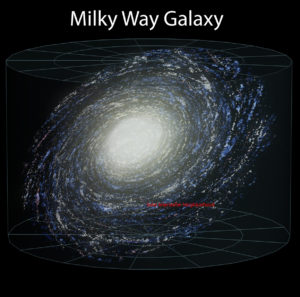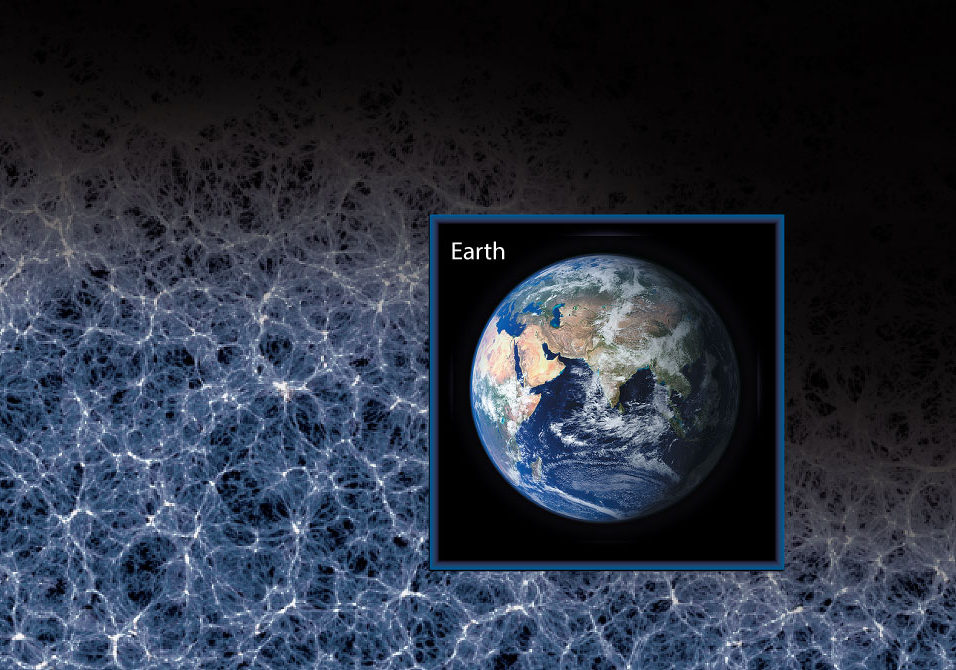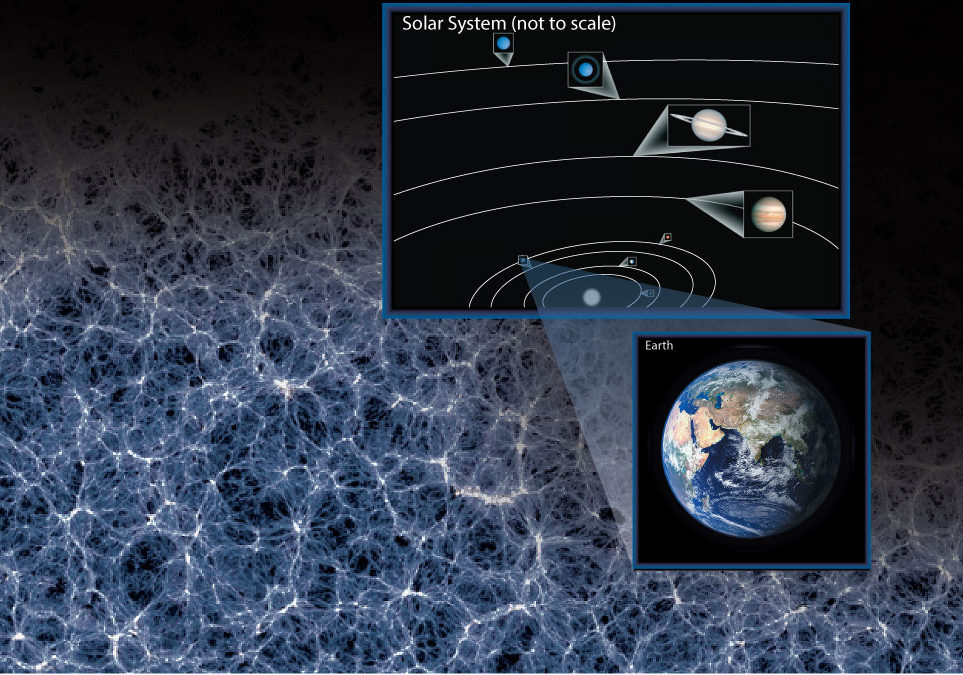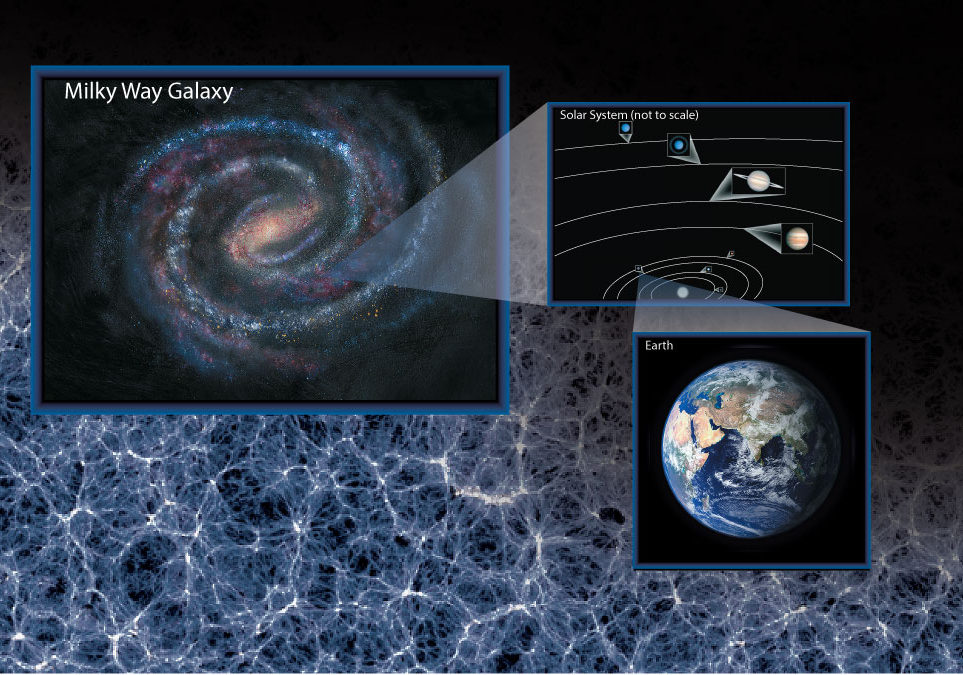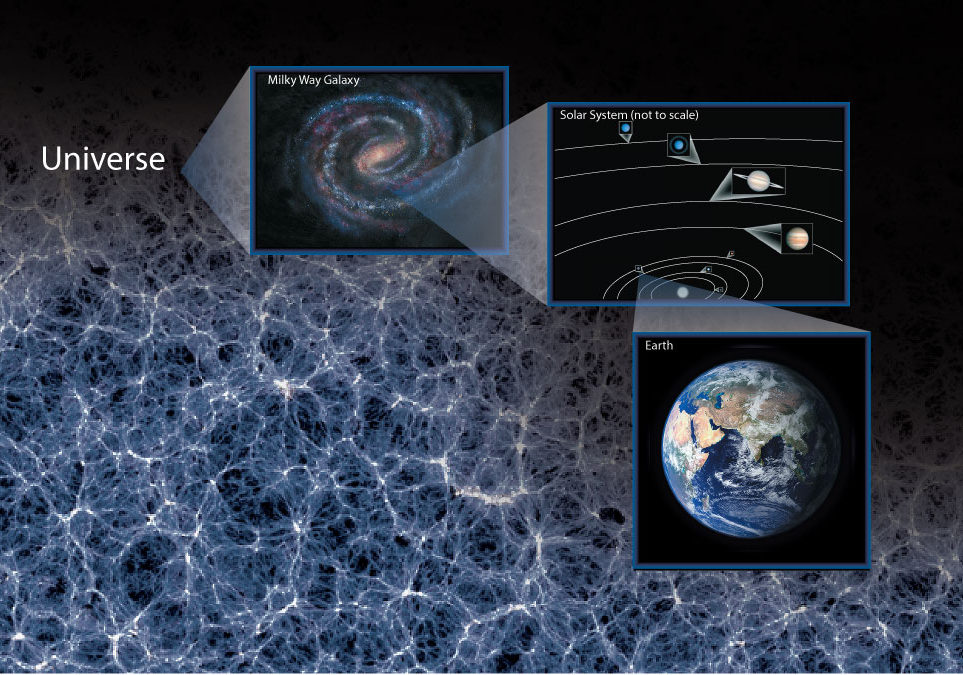Imagine that, as in a Star Wars movie, you were magically transported to a galaxy “far, far, away.” If you wanted to send a postcard to a friend at home, how would you address it? Here’s one possible way:
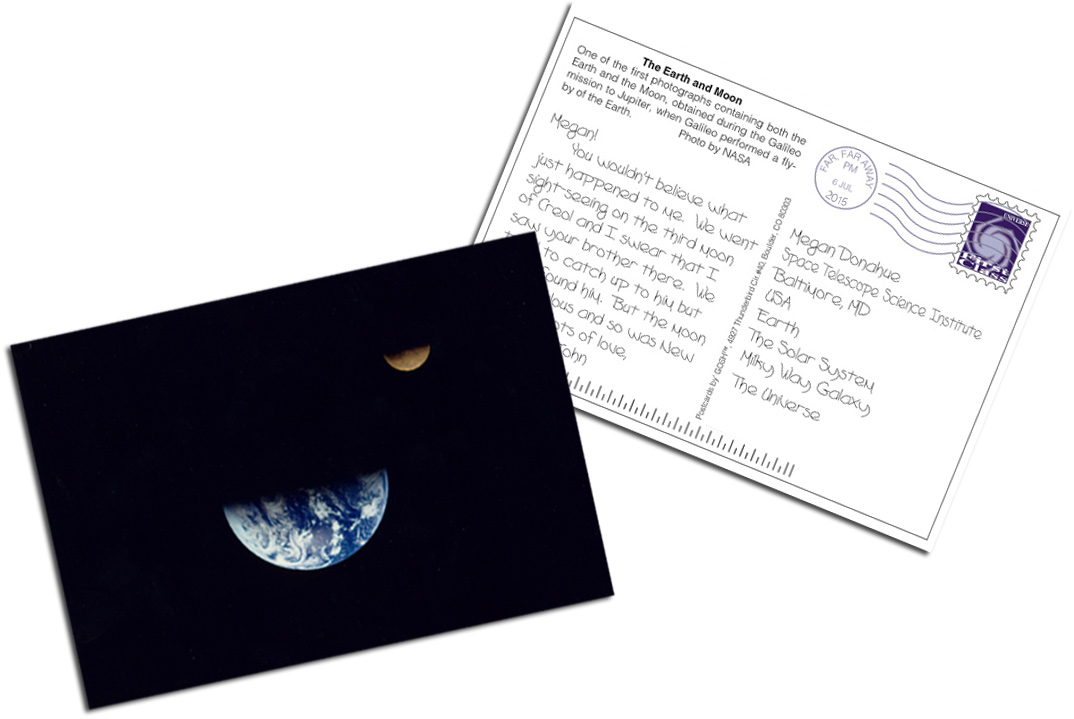
The last four items of the postcard address make up what we might call our “cosmic address,” because they describe the location of every human being who has ever lived:
- We live on a planet called Earth.
- Earth is part of our solar system , which consists of the Sun and the family of planets, moons, and smaller bodies that orbit it.
- Our solar system is one of billions of similar systems that make up our Milky Way Galaxy.
- Our Milky Way Galaxy is one of many billions of galaxies in our universe.
Click through Slideshow 1.1 below to see how these ideas all fit together.
Quick Quiz #1
Note: As always, after you finish the quiz, be sure you read the feedback that explains the correct answers, to make sure you understand the reasons for these answers.
Distance Measurements
Before we can discuss our cosmic address in more detail, we need a way to describe sizes and distances in the universe. In science, we generally make all measurements using the international metric system, which means that we usually describe large distances in kilometers. When we study the universe, however, many distances are so large that it’s more convenient to use even bigger units. Two are particularly useful:
- One astronomical unit (AU) is Earth’s average distance from the Sun, which is about 150 million kilometers (93 million miles). We commonly describe distances within our solar system in AU.
- One light-year (ly) is the distance that light can travel in 1 year, which is about 10 trillion kilometers (6 trillion miles). We generally use light-years to describe the distances of stars and galaxies.
Be sure to note that a light-year is a unit of distance, not of time. Light travels at the speed of light, which is about 300,000 kilometers per second. We therefore say that one light-second is about 300,000 kilometers, because that is the distance light travels in 1 second. Similarly, one light-minute is the distance that light travels in 1 minute, one light-hour is the distance that light travels in 1 hour, and one light-year is the distance light travels in a year.
Do the Math
How far is a light-year?
Let’s answer this question using the Understand-Solve-Explain procedure.
Step 1 – Understand the problem. The question asks how far, so we are looking for a distance. In this case, the definition of a light-year tells us that we are looking for the distance that light can travel in 1 year. We know that light travels at the speed of light, so we are looking for an equation that gives us distance from speed. If you don’t know this equation, think of a simpler but similar problem, such as “If you drive at 50 kilometers per hour, how far will you travel in 2 hours?” The answer is 100 kilometers, because you will travel 50 kilometers in the first hour and another 50 kilometers in the second hour. Notice that we can get the same answer by multiplying the speed (50 km/hr) by the time (2 hr). This give us a general formula for calculating distances:
For the question of “how far is a light-year?,” the speed is the speed of light, or 300,000 km/s, and the time is 1 year:

We can now show all the math like this:
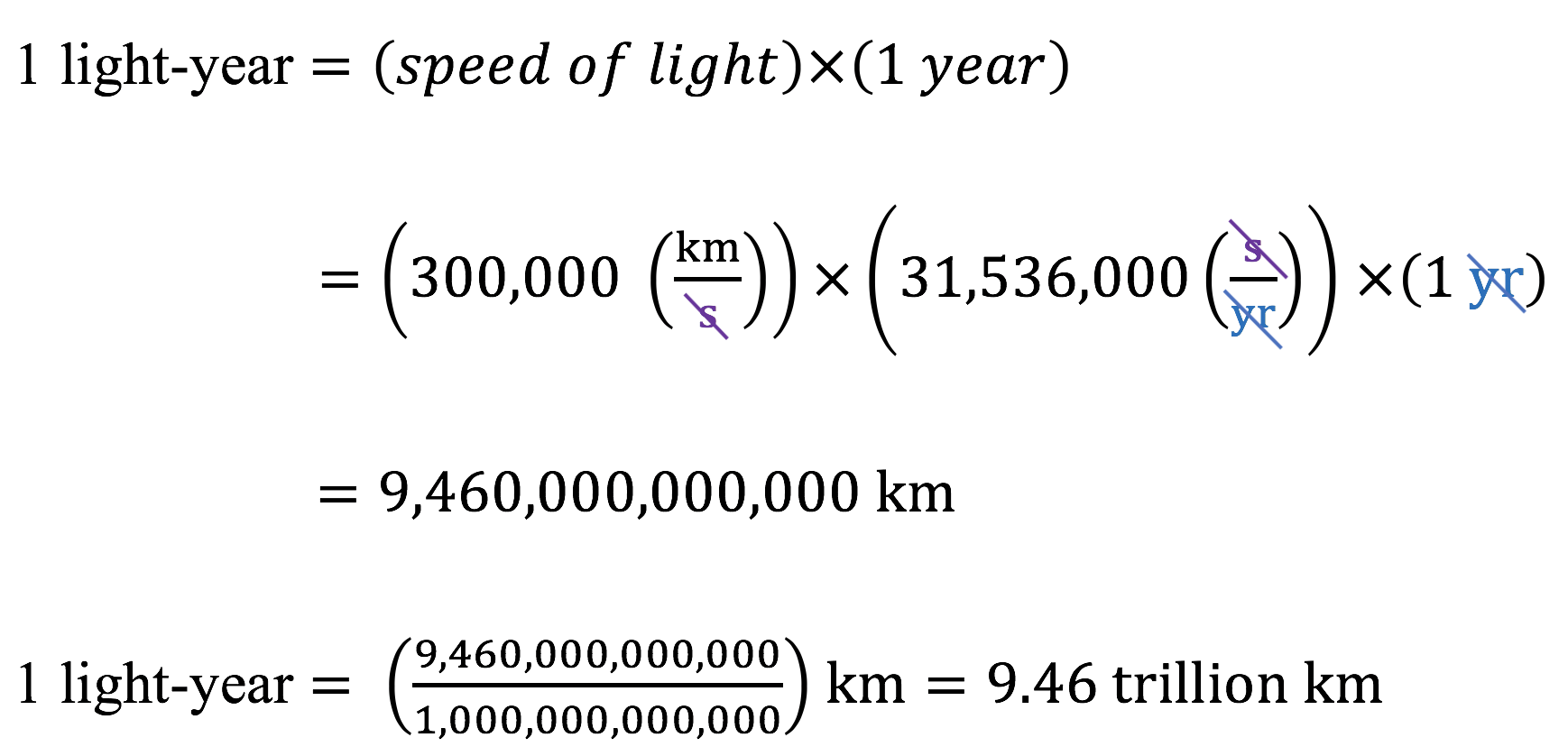
Step 3 – Explain and Check your result. In sentence form, the answer is “One light-year is about 9.46 trillion kilometers.” Notice that this answer makes sense: It has the expected units of distance (kilometers) and it is a long way, as we expect for the distance that light can travel in a year. We say “about” in the answer because we know it is not exact. For example, a year is not exactly 365 days long. In fact, for most purposes, we can approximate the answer further as “One light-year is about 10 trillion kilometers.”
Now, put your skills to the test. Use what you learned in the example above to calculate the distance in kilometers to at least one star from the list below:
Alpha Centauri: distance = 4.4 light-years
Barnard’s Star: distance = 6.0 light-years
Sirius: distance = 8.6 light-years
Vega: distance = 25 light-years
Aldebaran: distance = 65 light-years
Record all your work and your answer(s) in your task book. After you have done this, find another student who has calculated the distance to the same star(s). Do your answers match?
- If so, write the name of the student with the matching answer in your task book and note that you both got the same answer.
- If not, discuss together until you figure out what the correct answer should be, then each of you should write the revised calculation in your task books. (Do not erase your original answer; just add a note with the other student’s name and explain that the two of you decided that your original answer should be revised, and show your revised work.)
Just as a light-year is the distance that light travels in one year, a light-day is the distance that light travels in one day. How far is a light-day, in kilometers?
Follow the example above to calculate an answer in kilometers. Show your work and write down the answer in your task book.
Teacher Notes: The plan here is that, starting in 6th grade, we will introduce the following general problem solving procedure, which you see referred to in this box.
The key to problem solving with mathematics is to approach problems in a clear and organized way. Here is a simple, 3-step approach that we recommend you follow:
Step 1 Understand the problem: Ask yourself what the solution will look like (for example, what units will it have? will it be big or small?) and what information you need to solve the problem. Draw a diagram or think of a simpler, similar problem to help you decide how to solve it.
Step 2 Solve the problem: Carry out the necessary calculations.
Step 3 Explain your result: Be sure that your answer makes sense, and think about what you’ve learned by solving the problem.
You can remember this process as “Understand, Solve, and Explain,” or U-S-E for short. You may not always need to write out the three steps explicitly, but they may help if you are stuck.
Answers to the Check Your Math Skills Tasks:
Calculating distance to nearby star
There are several procedures that students could use, but the easiest is simply to use the fact already found in the example, which is that 1 light-year = 9.46 trillion km. Therefore:
Alpha Centauri distance in km: 4.4 ly x 9.46 trillion km/ly = 41.6 trillion km
Barnard’s Star distance in km: 6.0 ly x 9.46 trillion km/ly= 56.8 trillion km
Sirius distance in km: 8.6 ly x 9.46 trillion km/ly = 81.4 trillion km
Vega distance in km: 25 ly x 9.46 trillion km/ly = 236.5 trillion km
Aldebaran distance in km: 65 ly x 9.46 trillion km/ly = 614.9 trillion km
Calculate a light-day in km
Following the Do the Math example, the correct answer is 1 light-day=25,920,000,000 km. Students should show their work for calculating how many seconds are in a day:

And for calculating the distance in kilometers:
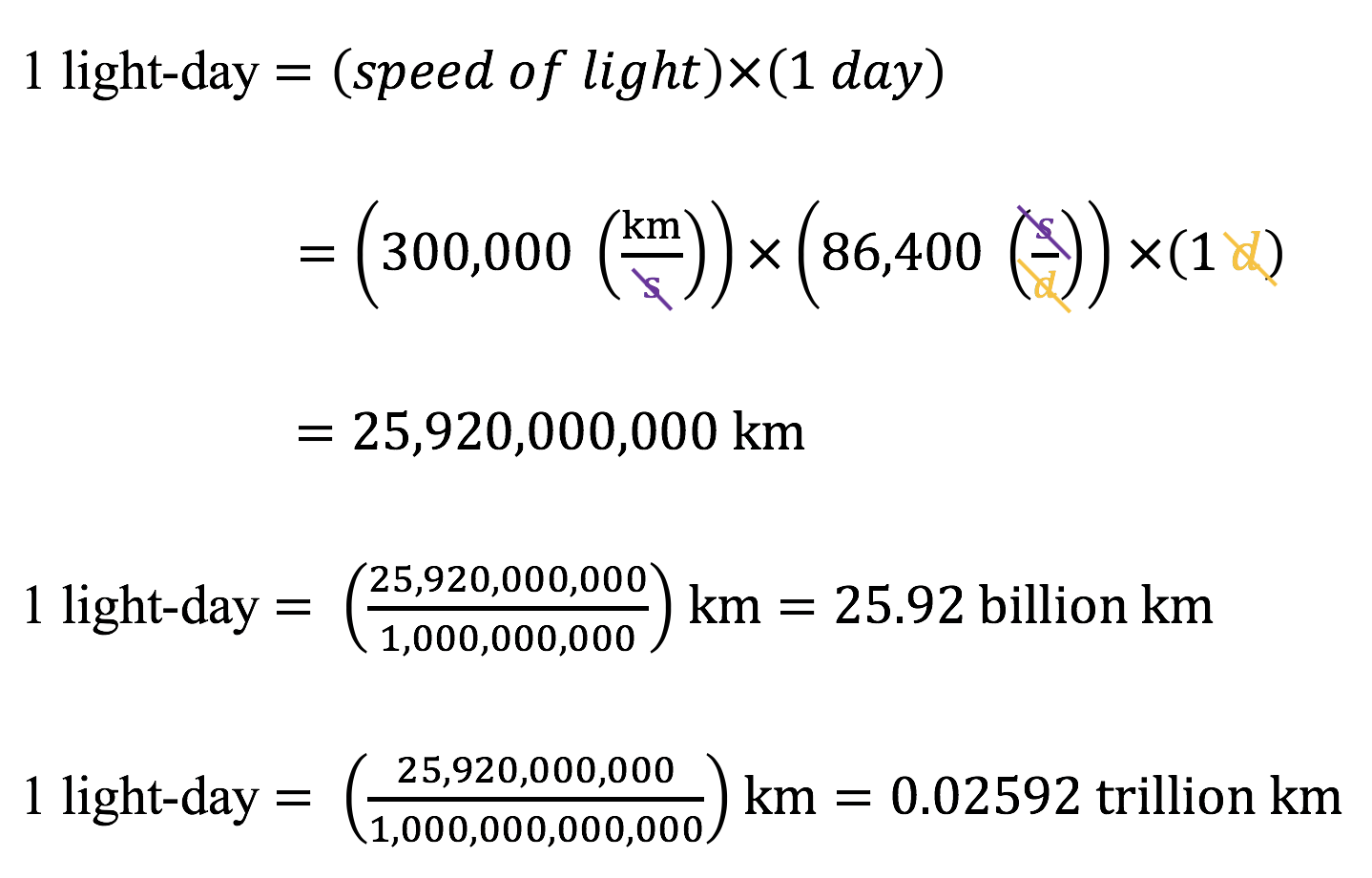
Quick Quiz #2 Distance Units
Note: As always, after you finish the quiz, be sure you read the feedback that explains the correct answers, to make sure you understand the reasons for these answers.
